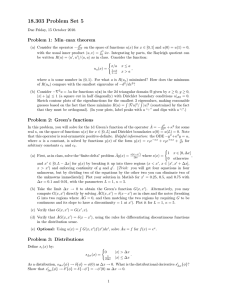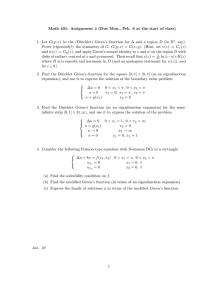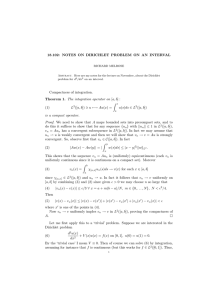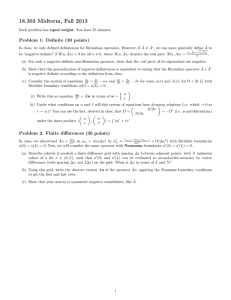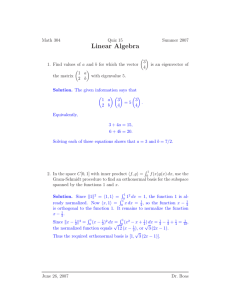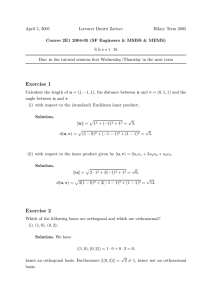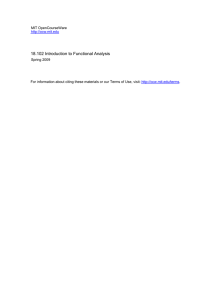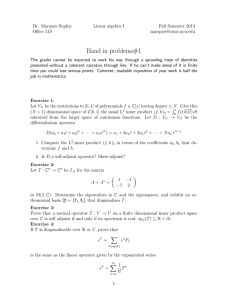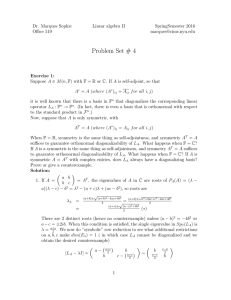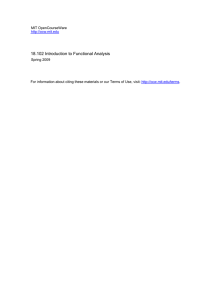18.102: TEST2 – TAKE HOME Tuesday, November 20, 2007.
advertisement
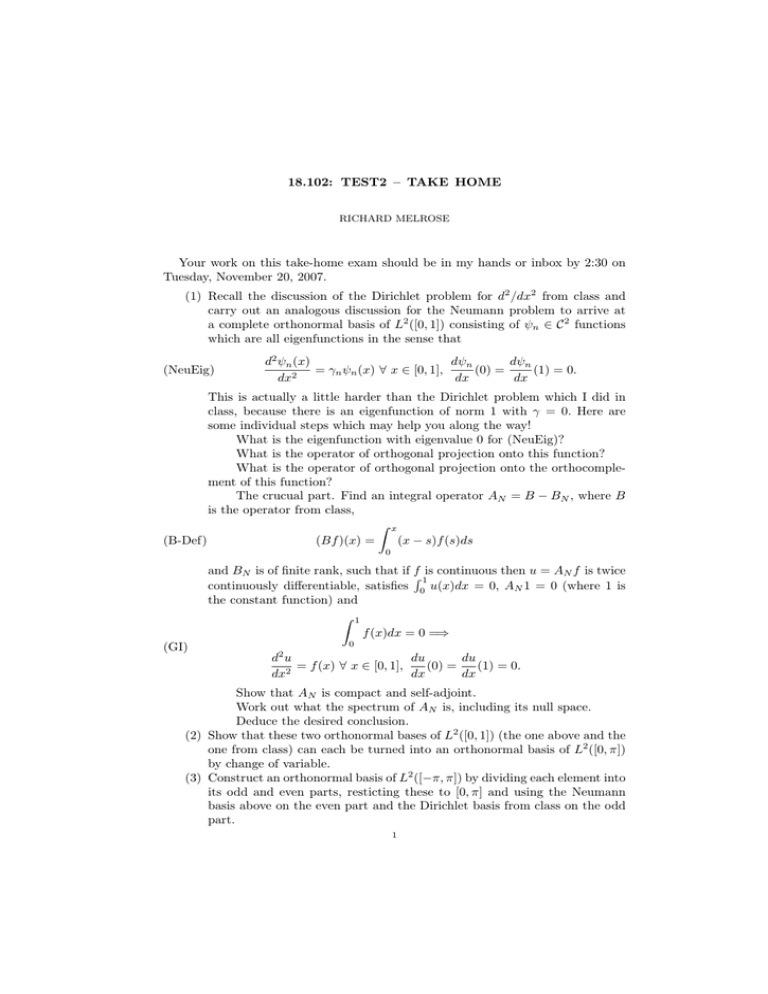
18.102: TEST2 – TAKE HOME RICHARD MELROSE Your work on this take-home exam should be in my hands or inbox by 2:30 on Tuesday, November 20, 2007. (1) Recall the discussion of the Dirichlet problem for d2 /dx2 from class and carry out an analogous discussion for the Neumann problem to arrive at a complete orthonormal basis of L2 ([0, 1]) consisting of ψn ∈ C 2 functions which are all eigenfunctions in the sense that (NeuEig) dψn dψn d2 ψn (x) = γn ψn (x) ∀ x ∈ [0, 1], (0) = (1) = 0. dx2 dx dx This is actually a little harder than the Dirichlet problem which I did in class, because there is an eigenfunction of norm 1 with γ = 0. Here are some individual steps which may help you along the way! What is the eigenfunction with eigenvalue 0 for (NeuEig)? What is the operator of orthogonal projection onto this function? What is the operator of orthogonal projection onto the orthocomplement of this function? The crucual part. Find an integral operator AN = B − BN , where B is the operator from class, Z x (B-Def) (Bf )(x) = (x − s)f (s)ds 0 and BN is of finite rank, such that if fR is continuous then u = AN f is twice 1 continuously differentiable, satisfies 0 u(x)dx = 0, AN 1 = 0 (where 1 is the constant function) and Z 1 f (x)dx = 0 =⇒ (GI) 0 d2 u du du = f (x) ∀ x ∈ [0, 1], (0) = (1) = 0. dx2 dx dx Show that AN is compact and self-adjoint. Work out what the spectrum of AN is, including its null space. Deduce the desired conclusion. (2) Show that these two orthonormal bases of L2 ([0, 1]) (the one above and the one from class) can each be turned into an orthonormal basis of L2 ([0, π]) by change of variable. (3) Construct an orthonormal basis of L2 ([−π, π]) by dividing each element into its odd and even parts, resticting these to [0, π] and using the Neumann basis above on the even part and the Dirichlet basis from class on the odd part. 1 2 RICHARD MELROSE (4) Prove the basic theorem of Fourier series, namely that for any function u ∈ L2 ([−π, π]) there exist unique constants ck ∈ C, k ∈ Z such that X (FS) u(x) = ck eikx converges in L2 ([−π, π]) k∈Z and give an integral formula for the constants. Department of Mathematics, Massachusetts Institute of Technology E-mail address: rbm@math.mit.edu
